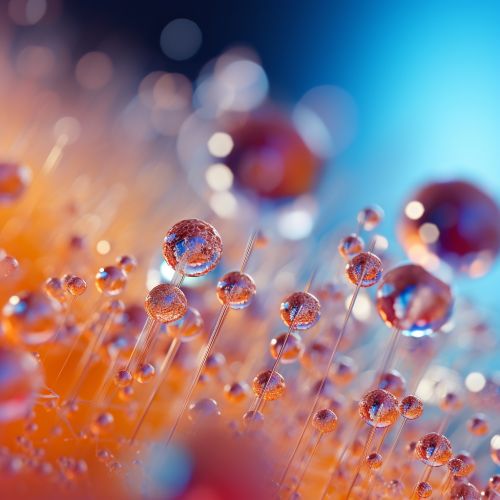Nanotechnology in drug delivery
Introduction
Nanotechnology in drug delivery refers to the usage of nanoscale materials for the delivery of drugs to specific cells or regions within the body. This field is a sub-discipline of pharmaceutical sciences and biomedical engineering, and it aims to improve the efficacy and safety of therapeutic agents.


Nanoparticles in Drug Delivery
Nanoparticles are the primary tools used in nanotechnology-based drug delivery. These tiny particles, which range in size from 1 to 100 nanometers, can be engineered to carry drugs and deliver them to specific cells or tissues in the body. This targeted delivery can increase the effectiveness of the drug, reduce side effects, and improve patient compliance.
Types of Nanoparticles
There are several types of nanoparticles used in drug delivery, including liposomes, polymeric nanoparticles, dendrimers, and quantum dots. Each type has unique properties that make it suitable for certain applications.
Nanotechnology and Drug Absorption
One of the major advantages of using nanotechnology in drug delivery is the ability to improve drug absorption. Many drugs are poorly absorbed by the body due to their large size or poor solubility. Nanotechnology can overcome these barriers by reducing the size of the drug particles and modifying their surface properties.
Nanotechnology and Targeted Drug Delivery
Nanotechnology also allows for targeted drug delivery, which is the delivery of drugs directly to the cells or tissues that need them. This can be achieved by attaching targeting ligands to the surface of nanoparticles. These ligands can bind to specific receptors on the target cells, allowing the nanoparticles to be taken up by these cells.
Challenges and Future Directions
Despite the many advantages of nanotechnology in drug delivery, there are also several challenges that need to be overcome. These include the potential toxicity of nanoparticles, the difficulty of scaling up nanoparticle production, and the regulatory hurdles associated with the approval of nanomedicine products. However, with ongoing research and development, it is expected that these challenges will be addressed in the future.
